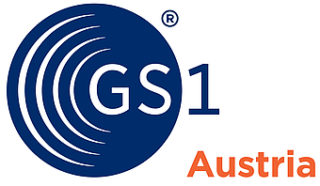EDI mapping as a success factor: why this process is so important

EDI mapping: aligning structures and relevant content
Companies usually have different internal data structures. This is due to the fact that myriad different IT and ERP systems exist and that not all of them follow the same logic. Applied to the world of Electronic Data Interchange (EDI), we could say that they speak different languages. This might sound like a challenge because as the number of EDI partners increases, one would have to “speak different languages.” This is where EDI service providers come in. In this context, a process called mapping plays an important role. In this blog post, I will explain how this happens and why standards are key.
At the outset, let’s remember this: standardized data formats are paramount for the transmission of EDI messages because ultimately, they make sure that business processes can take place automatically. Major EDI standards include EDIFACT, ANSI, ODETTE and VDA. They are either used in specific industries or across several industries. These standards describe how messages are structured and, as the name itself implies, how they are standardized. Therefore, a standardized structure is highly important.
Different terms for the same data field
However, if we look at existing IT systems at companies that would like to do Electronic Data Interchange with each other, we will see that oftentimes, major differences exist. The technical equipment and the existing data material are usually adapted to company-specific needs and practices. While one company might use an ERP system by SAP, another might use one by Microsoft, Sage, IFS or by any other manufacturer. And company A might call a data field “date”, while another might use the German word for the same field. In addition, these dates can be in different formats depending on the ERP. The same may be true for the color description of a product. One company might complete a data field with color codes while another might just enter “green” or “blue.” Both mean the same but express this idea differently. This could be a problem when trying to transfer and automatically process data. As a consequence, precautions should be taken.
EDI mapping is something like a “signpost” for data
Whenever two or several companies that have different structures or different database structures would like to exchange information, the structures and relevant content need to be coordinated for everything to work smoothly. Simply put, this is done via a translation table that transforms data from the source structure of a company’s own ERP system into the target structure or target file of the required format. The technical term for this is mapping. Eventually, mapping ensures that, for instance, a field with an invoice date must exactly match the rules and definition of the target structure. The same is true for invoice numbers, invoice total and other standardized fields that both sides need to complete with the same information when using Electronic Data Interchange. During EDI mapping, the conversion software receives all required information for everything to work smoothly. Ultimately, it points the way to data transformation.
To avoid having to understand and speak countless languages (or data formats), data transformation is done in an “intermediate standard” (e.g., EDIFACT) that both sides understand. Or, in other words: company A speaks German and company B speaks French. The common denominator would be English, which both sides understand and speak. This is a great advantage if several business partners are involved because you only have to master ONE language, which in our case is an EDI standard. To take this analogy still further: mapping deals with all rules for grammar, syntax, and ultimately, vocabulary as well.
Experienced EDI service providers have comprehensive expertise
Merchandise manufacturers or intermediaries who supply several business partners usually receive EDI guidelines right at the start of their business relationship. These can differ greatly from company to company, which also requires coordination via mapping. To address specific needs, client-specific mappings can be created. For instance, EDITEL is happy to assist in the implementation of different EDI message types, including ORDERS, ORDRSP, DESADV, RECADV, INVOIC, PRICAT, etc. The same is true for data quality reviews to identify data errors (e.g., the review of GLN and GTIN, data plausibility and completeness, etc.). This avoids inaccurate data from getting transmitted or imported into IT systems.
If you have any questions about the information above, we will be happy to talk to you. Do not hesitate to contact my colleagues or myself. Please use the contact box on the right to send your inquiry.
 About the author
About the author
Karl Cegner
Head of Consulting & Project Delivery at EDITEL Austria
About EDITEL

EDITEL, an EDI service provider, is the internationally leading provider of EDI solutions (EDI = Electronic Data Interchange). The company specializes in the optimization of supply chain processes for companies of all sizes and in all industries.
Portrait photo copyright Editel/Petra Spiola
Symbolic image copyright iStockphoto, guvendemir

 About the author
About the author

